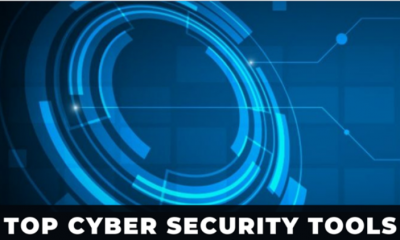Cryptocurrency
How to Make a Crypto Wallet

A cryptocurrency wallet is a piece of hardware that enables you to store and transfer bitcoin via a method known as self-custody. You can store bitcoin in a wallet by employing a mechanism called self-custody. This means that you are able to store your bitcoin on the blockchain and access it using a private key, as opposed to needing to go via a third party, such as a bank or other financial institution, in order to access it (more on that later).
When it comes to amassing money through cryptocurrency investments, there is often a great deal to learn about such a dynamic and ever-evolving means of asset accumulation. This is because cryptocurrencies are decentralized and their value is not standardized. Learning the most effective technique to store your cryptocurrency coins or non-fungible tokens (NFTs) is one of the most essential things you can do if you want to ensure the security of your holdings over the course of an extended period of time. This tutorial will guide you through the steps of building a cryptocurrency wallet so that you can store and access your digital assets. So let’s get started:
Read Also: Introduction to Cryptocurrency Gambling for Beginners
How to Make a Crypto Wallet
Non-custodial or Hot wallet:
Software that does not retain copies of your data and “hot wallets” are examples of non-custodial storage options. The use of hot wallets is typically free of charge, and some of them even include other services, such as staking and lending.
The following steps should be followed to create a software wallet:
1. Choose a wallet app and save it to your computer or mobile device for use; many software wallets offer compatibility with both types of devices.
2. Make sure you have an account. Because you won’t be required to enter any personal information throughout this process, it will be simpler than some of the other options available to you. You will, rather, be responsible for developing a security measure for yourself, such as a password or facial recognition.
3. Jot down your recovery phrase, often known as your “seed” phrase. When you first create an account, the application will generate a random phrase consisting of 12 or 24 words that corresponds to your private key. If you want to retrieve your login credentials on another device or if you lose your login credentials, you won’t be able to access your funds unless you have this phrase, so make sure to keep it in a secure location.
4. Include some cryptocurrency in your wallet. You can achieve this goal by moving tokens from one wallet to another or by linking your account in the app settings to an exchange. But, doing either of these things will require further verification.
Hardware wallets:
Hardware wallets are non-custodial, however they keep your keys on a physical device that you may connect to your computer or phone by using a USB plug-in, WiFi, or a QR code. Hardware wallets are also known as cold storage wallets. They range in price from from $50 to $250 and can be more difficult to operate, but they boost your security by preventing your data from ever being accessed online.
Putting together a hardware wallet is as easy as these steps:
1. Get the hardware. Certain hardware wallets are only available for purchase directly from the company who produce them, while others can be found in retail establishments such as Best Buy and Walmart. After it has been delivered to you, you will need to turn it on, and it’s possible that you may be asked to create a pin code.
2. Save the file to your computer. The many kinds of hardware wallets each come with their own compatible software that must be installed in order to configure the device and move money. In addition, certain desktop applications come equipped with features that are pre-installed and allow you to connect your wallet to exchanges or applications for decentralized financial management. When you establish an account, you should make a note to jot down your 12- or 24-word seed phrase and store it in a secure location for future use.
3. Connect your device. It is possible to connect your hardware wallet to online software in a number of different methods, which will allow you to transfer tokens. A USB cable can be used to connect certain devices to your computer, while others can connect wirelessly via a QR code or WiFi. Instructions on how to configure this feature should have been included with your device when you purchased it.
4. Include some cryptocurrency in your wallet. Some cold wallets provide functionality that guides you through the process of purchasing cryptocurrency and loading it onto your device for offline storage. You can also migrate tokens from an exchange or another existing wallet into your own wallet by using the address of your wallet.
Custodial wallet:
Also referred to as hosted wallets, custodial wallets are managed on your behalf by a third party operator. They provide users with the ability to keep assets directly on the exchange for the purpose of facilitating trade more easily. Custodial wallets provide a built-in password recovery feature in the event that you forget your login credentials. Because of this feature, custodial wallets are an excellent choice for users who are just starting out or who want a less hands-on approach.
Here is how to set up a cryptocurrency wallet that is held in custodial fashion:
1. Identify a reliable hosting service. This is of the utmost significance when dealing with custodial wallets, as you will not have control over your private keys. The most reliable cryptocurrency exchanges will safeguard your assets against hacking attempts and provide an interface that is simple to use. In addition to this, they offer some protection against financial loss. Advantages include both low fees and rewards schemes.
2. Make sure you have an account. After choose which platform you want to use, navigate to the registration page using a computer or a mobile device. After that, you will need to create an account by providing your email address and deciding on a password for it. There is a possibility that you will be required to submit personal information, such as your full name, address, Social Security number, and birth date. In order to complete the verification process, you could also be required to input a code that was provided to your phone number and upload a picture of your photo identification.
3. Make sure you have some cryptocurrency in your wallet. Because your account on the exchange also functions as a wallet, as soon as you are logged in, you will be able to utilize the newly generated address for your wallet to send cryptocurrency to another wallet. In addition, you can link your bank account to the exchange in order to purchase coins directly from it. For the majority of exchanges, you have the option of paying with debit or credit cards, as well as through ACH and wire transfers. The fees may change depending on the type of payment used.
FAQs
How much does it cost to create a crypto wallet?
A straightforward cryptocurrency wallet software with a short set of features can cost anywhere from $25,000 to $40,000 to develop. On the other hand, the development cost of a mobile wallet app that supports a comprehensive feature set, such as in-chat transactions, KYC verifications, over-the-counter trading, and so on, is likely to be in the region of $200,000 or even more.
Are crypto wallets profitable?
You can make a significant amount of money by directing them in the right direction. Launching a bitcoin wallet is likely to result in this as one of its primary sources of revenue. You, as the owner of the wallet, have the ability to amass a specific amount of transaction fees for each and every successful cryptocurrency exchange.
Which crypto wallet has minimum fees?
Binance is a cryptocurrency exchange platform that has one of the lowest transaction costs compared to all of the other exchange platforms. As a user of the platform, you will have the ability to build an online cryptocurrency wallet thanks to this feature. After that, you will be able to trade in other cryptocurrencies as well as NFTs. Additionally, it gives users and miners the opportunity to earn interest.




















